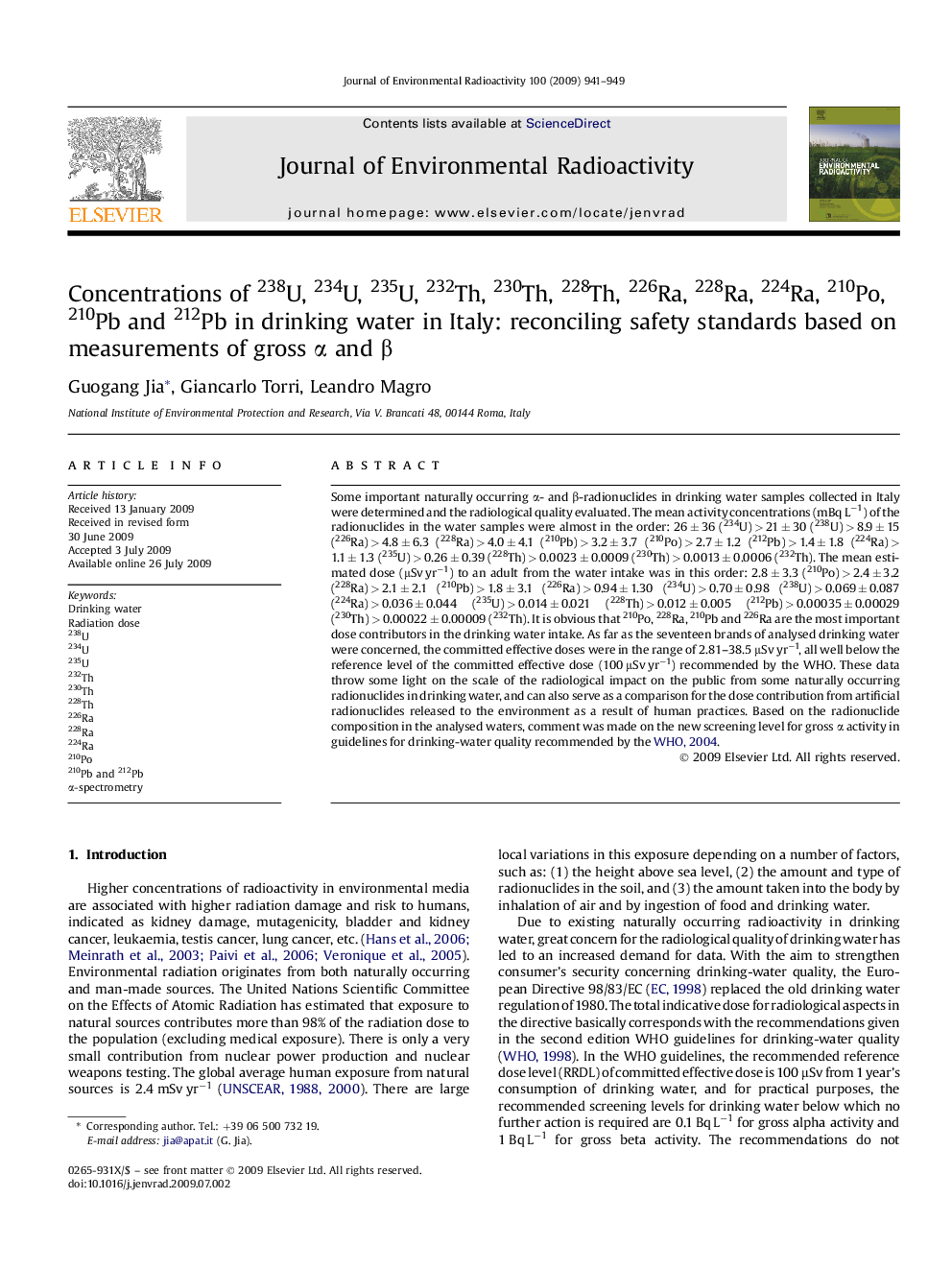| Article ID | Journal | Published Year | Pages | File Type |
|---|---|---|---|---|
| 1738915 | Journal of Environmental Radioactivity | 2009 | 9 Pages |
Some important naturally occurring α- and β-radionuclides in drinking water samples collected in Italy were determined and the radiological quality evaluated. The mean activity concentrations (mBq L−1) of the radionuclides in the water samples were almost in the order: 26 ± 36 (234U) > 21 ± 30 (238U) > 8.9 ± 15 (226Ra) > 4.8 ± 6.3 (228Ra) > 4.0 ± 4.1 (210Pb) > 3.2 ± 3.7 (210Po) > 2.7 ± 1.2 (212Pb) > 1.4 ± 1.8 (224Ra) > 1.1 ± 1.3 (235U) > 0.26 ± 0.39 (228Th) > 0.0023 ± 0.0009 (230Th) > 0.0013 ± 0.0006 (232Th). The mean estimated dose (μSv yr−1) to an adult from the water intake was in this order: 2.8 ± 3.3 (210Po) > 2.4 ± 3.2 (228Ra) > 2.1 ± 2.1 (210Pb) > 1.8 ± 3.1 (226Ra) > 0.94 ± 1.30 (234U) > 0.70 ± 0.98 (238U) > 0.069 ± 0.087 (224Ra) > 0.036 ± 0.044 (235U) > 0.014 ± 0.021 (228Th) > 0.012 ± 0.005 (212Pb) > 0.00035 ± 0.00029 (230Th) > 0.00022 ± 0.00009 (232Th). It is obvious that 210Po, 228Ra, 210Pb and 226Ra are the most important dose contributors in the drinking water intake. As far as the seventeen brands of analysed drinking water were concerned, the committed effective doses were in the range of 2.81–38.5 μSv yr−1, all well below the reference level of the committed effective dose (100 μSv yr−1) recommended by the WHO. These data throw some light on the scale of the radiological impact on the public from some naturally occurring radionuclides in drinking water, and can also serve as a comparison for the dose contribution from artificial radionuclides released to the environment as a result of human practices. Based on the radionuclide composition in the analysed waters, comment was made on the new screening level for gross α activity in guidelines for drinking-water quality recommended by the WHO, 2004.
